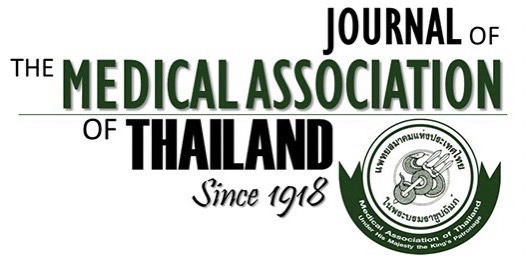Clinical Outcomes after Primary Percutaneous Coronary Intervention in Octogenarians with ST-Segment Elevation Myocardial Infarction
Wiwun Tungsubutra¹, Orathai Kulpornphan¹, Chunhakasem Chotnaiwattarakul², Rewat Phankingthongkum¹, Nattawut Wongpraparut¹, Narathip Chunhamaneewat¹, Korakoth Towachirapon², Asa Phichaphop¹, Pariya Panchavinnin¹
Affiliation : ¹ Division of Cardiology, Department of Medicine, Faculty of Medicine Siriraj Hospital, Mahidol University, Bangkok, Thailand; ² Her Majesty Cardiac Center, Faculty of Medicine Siriraj Hospital, Mahidol University, Bangkok, Thailand
Background: Older age is a significant predictor of adverse outcomes in patients with acute ST-segment elevation myocardial infarction (STEMI). However, data on clinical outcomes in octogenarian patients with STEMI undergoing primary percutaneous coronary intervention (PCI) is limited.
Objective: To determine the one-year mortality after primary PCI in octogenarian patients with STEMI undergoing primary PCI.
Materials and Methods: The present study was a retrospective descriptive study of STEMI patients undergoing primary PCI at Siriraj Hospital between July 1, 2010, and June 30, 2016. Patients were divided into two groups, octogenarians, aged 80 years or older, and non-octogenarians, younger than 80 years.
Results: Four hundred ninety-three STEMI patients who underwent primary PCI were analyzed in the present study, among whom 9.7% were octogenarians. There were 48 octogenarian patients, and their mean age was 83.6±3.6 years old. Females were more prevalent in octogenarians at 50% versus 23.6% (p<0.001). Octogenarian patients presented with higher-risk features, including a greater incidence of cardiogenic shock at 22.9% versus 11.7% (p=0.027), Killip class II or greater at 39.6% versus 23.4% (p=0.014), a higher GRACE risk score at 200.4±35.5 versus 155.5±42.0 (p<0.001), a higher prevalence of multivessel coronary artery disease (CAD) at 75.0% versus 57.8% (p=0.021), a higher percentage of chronic kidney disease at 66.7% versus 27.4% (p<0.001), and a lower left ventricular ejection fraction at 44.3±11.8% versus 50.0±13.5% (p=0.006). The 1-year all-cause mortality in octogenarians was 29.8% versus 14.7% in non-octogenarians (unadjusted HR 2.13, 95% CI 1.19 to 3.81, p=0.010) and the 1-year MACE rate in octogenarians was 55.6% versus 31.5% (unadjusted HR 2.02, 95% CI 1.32 to 3.09, p=0.001). After adjusting for differences in baseline characteristics, there remained significant differences in 1-year all-cause mortality (adjusted HR 2.18, 95% CI 1.19 to 3.97, p=0.011) and MACE between both groups (adjusted HR 2.00, 95% CI 1.29 to 3.09, p=0.002).
Conclusion: In the population of STEMI patients who underwent primary PCI, octogenarians exhibited a 1-year all-cause mortality rate of 29.8% and a 1-year MACE rate of 55.6%. After adjustments for differences in baseline characteristics, there were significant differences in 1-year all-cause mortality and MACE between octogenarian and non-octogenarian patients.
Received 3 September 2024 | Revised 30 January 2025 | Accepted 7 February 2025
DOI: 10.35755/jmedassocthai.2025.4.274-282-01483
Keywords : Octogenarian patients; ST segment elevation myocardial infarction; Primary percutaneous coronary intervention
All Articles
Download



